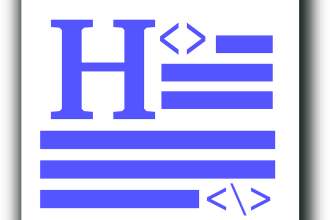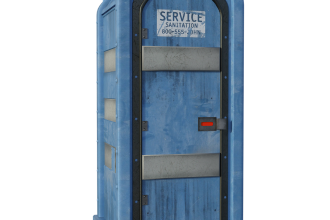Supporting your baby’s motor development is a fascinating journey filled with milestones, challenges, and joyful discoveries. From the earliest days, babies begin to interact with their surroundings through moving their limbs, grasping objects, and eventually learning to crawl and walk. As we approach 2025, advances in early childhood development research and innovative toys from brands like Fisher-Price, VTech, Baby Einstein, and Melissa & Doug offer parents effective tools to encourage these essential skills. Motor development is broadly divided into gross motor skills — like sitting, crawling, and walking — and fine motor skills, such as grasping and manipulating small objects. Understanding these categories and the typical developmental timeline helps caregivers provide age-appropriate support and stimulation. Creating a safe and engaging environment, encouraging tummy time, and offering versatile toys help babies strengthen muscles and coordination. Moreover, acknowledging each child’s unique developmental pace ensures a nurturing, pressure-free experience. This article explores expert-backed strategies and engaging activities tailored to each stage of your baby’s motor growth, equipping you with knowledge and resources to aid your child’s journey toward physical independence and confidence.
Understanding Fine and Gross Motor Skills: The Foundation of Your Baby’s Physical Growth
A baby’s motor skills development is a complex but natural progression that starts from birth and continues through early childhood. It can be divided into two core areas: gross motor skills and fine motor skills. Each plays a vital role in your baby’s ability to interact with and explore their environment.
Gross Motor Skills Explained
This category involves the use of large muscle groups, controlling movements such as:
- Head control and lifting the head during tummy time
- Rolling over
- Sitting independently
- Crawling and standing
- Walking, running, and balancing
Early on, these gross motor skills build the necessary strength and coordination for more complex tasks. For instance, tummy time is essential to strengthen neck and back muscles. This prepares babies to hold their heads up, roll over, and eventually crawl. Motor development experts underscore the importance of allowing babies to experience these movements naturally without overusing baby seats or restrictive devices, as these can delay muscle strengthening.
Fine Motor Skills and Their Role
Fine motor skills involve small muscle movements, primarily in the hands and fingers, enabling actions like:
- Grasping and releasing objects
- Picking up small items with thumb and forefinger
- Manipulating toys and drawing tools
- Clapping and pointing
As babies progress, they transition from reflexive grasping to intentional manipulation of objects. Toys from brands like Melissa & Doug, Manhattan Toy, and Tiny Love are designed to engage this transition with varying textures and shapes that encourage tactile exploration. Developmental milestones often include moving from grabbing their first rattle to stacking blocks or scribbling with crayons.
Typical Milestones in Fine and Gross Motor Development
| Age Range | Gross Motor Skills | Fine Motor Skills | Examples of Activities |
|---|---|---|---|
| 0-6 months | Holding head, rolling over | Reaching and grasping objects | Tummy time, soft rattles (e.g., Baby Einstein rattles) |
| 6-12 months | Crawling, sitting up unsupported | Stamping, picking up small toys | Stacking blocks (HABA), musical instruments (VTech) |
| 1-3 years | Walking, balancing | Holding crayons, simple puzzles | Push-pull toys (Skip Hop), coloring, building sets (Melissa & Doug) |
Each child’s journey is unique, but these benchmarks assist parents in spotting typical progress and planning appropriate activities.
Effective Motor Development Support in the First Six Months
During the first half year, babies focus on foundational motor skills essential for future mobility. Providing consistent and varied sensory-motor stimulation supports muscle strength and coordination.
Daily Activities to Enhance Gross Motor Development
Tummy Time: Introducing regular tummy time is a proven method to develop neck, shoulder, and back muscles vital for rolling over and sitting. Brands such as Baby Einstein and Fisher-Price offer tummy time mats with colorful visuals and interactive components that keep babies engaged while strengthening muscles.
Stimulating Fine Motor Skills
In this early stage, encouraging grasping and reaching behaviors is invaluable. Toys designed for babies to hold and explore, like Bright Starts rattles or Infantino textured activity balls, promote finger movement and sensory feedback.
Visual and Sensory Engagement
Visual tracking develops alongside motor coordination. Mobiles and brightly colored objects attract a baby’s gaze and encourage them to practice head movements and eye control. Brands like Manhattan Toy excel in offering visually stimulating products ideal for this phase.
- Perform 3-5 tummy time sessions daily, starting with brief periods and gradually increasing duration.
- Provide grasp toys with various textures and sizes to improve tactile experience.
- Incorporate gentle massages and skin-to-skin contact to heighten body awareness and calmness.
| Activity | Benefit | Recommended Products |
|---|---|---|
| Tummy Time | Strengthens neck and back muscles | Baby Einstein Play Mat, Fisher-Price Play Gym |
| Grasp Toys | Enhances finger dexterity and touch sensitivity | Bright Starts Rattles, Infantino Textured Balls |
| Visual Stimulation | Develops eye-tracking and focusing skills | Manhattan Toy Mobiles |
Safety is paramount; avoid prolonged use of baby seats or restrictive devices that limit free movement. Instead, opt for mats on firm surfaces to allow natural exploration. For more detailed insights on initiating these exercises and understanding your baby’s early motor milestones, explore expert advice on developmental timelines.
Supporting Movement and Coordination from 6 to 12 Months: Encouraging Independence
Between six and twelve months, babies achieve exciting progress as they start crawling, sitting independently, and attempting to stand. Guiding them with targeted activities during this phase accelerates muscle control and spatial awareness.
Gross Motor Skill Activities
- Crawling Encouragement: Setting up soft obstacle courses using pillows or cushions inspires babies to maneuver around objects, strengthening limbs and core muscles.
- Sitting and Standing Practice: Using supportive devices like Lindam playmats combined with gentle assistance helps babies build balance.
- Baby Walker Alternatives: Safe push toys from Lindam or Skip Hop promote walking without restricting natural posture.
Enhancing Fine Motor Skills
- Introducing stacking and sorting toys like HABA blocks to foster hand-eye coordination and problem-solving.
- Musical toys from VTech sharpen rhythm recognition alongside finger manipulation.
- Encouraging finger foods and self-feeding activities improve grasp and control, tying into broader developmental domains (language development also benefits from increased autonomy).
| Activity | Developmental Benefit | Suggested Toys |
|---|---|---|
| Obstacle Course | Improves balance, coordination, and muscle strength | Lindam Floor Mats, Soft Cushions |
| Push Toys | Promotes walking and posture control | Skip Hop Push Walker |
| Stacking Blocks | Refines fine motor skills and cognitive abilities | HABA Wooden Blocks |
| Musical Instruments | Enhances rhythm and finger dexterity | VTech Baby Drum Set |
The goal during this transformative period is to foster curiosity and self-initiated movement without undue pressure. Giving babies the freedom to explore while providing stimulating tools ensures a rewarding and progressive learning experience. Parents seeking answers about crawling timelines may find helpful resources at this dedicated page.
Advancing Motor Skills from Toddler to Preschool Age: Creative and Physical Growth (1 to 5 years)
As toddlers grow into preschoolers, their motor skills become more refined and complex. This period is crucial for strengthening agility, dexterity, and endurance, laying the groundwork for future academic and physical achievements.
Activities for 1 to 3 Years Old
- Walking and Balancing: Utilizing push and pull toys encourages toddlers to practice walking and develop balance. Brands like Lindam and Skip Hop provide durable, safe options tailored to this stage.
- Creative Fine Motor Play: Encouraging use of building blocks (HABA), simple puzzles (Melissa & Doug), and finger painting fosters hand-eye coordination and artistic expression.
- Outdoor Movement: Safe play areas with soft surfaces enable climbing and running exercises, vital for gross motor development and confidence.
The Preschool Years (3 to 5 Years Old)
- Complex Motor Games: Activities including jumping, hopping, and balancing on beams refine coordination and muscle control.
- Fine Motor Sophistication: Engaging in activities like threading beads, cutting with child-safe scissors, and assembling puzzles improve precision and focus.
- Sports and Group Play: Introduction to swimming, dancing, or gymnastics classes supports endurance and social skills, key foundations for long-term well-being.
| Age | Motor Skill Focus | Examples of Activities | Recommended Toys and Tools |
|---|---|---|---|
| 1-3 years | Walking, balancing, and creative play | Push-pull toys, block building, finger painting | Lindam Walkers, HABA Blocks, Melissa & Doug Art Sets |
| 3-5 years | Advanced coordination and fine motor work | Jumping games, bead threading, puzzles | Tiny Love Puzzles, Käthe Kruse Craft Kits, Schleich Playsets |
Consistent encouragement paired with appropriate toys from trusted brands supports children’s desire to explore and master new skills. This phase is also critical for emotional development, where success in motor tasks builds confidence and persistence.
How to Enhance Dexterity and Endurance Beyond Five Years: The Path to Mastery
From age five onwards, children benefit from activities that challenge coordination, endurance, and social interaction. These skills become more sophisticated and begin to influence academic and extracurricular success.
Engaging Activities to Advance Motor Skills
- Ball Games: Playing catch, soccer, or basketball sharpens hand-eye coordination and teamwork. Fisher-Price offers beginner-friendly balls suitable for young children.
- Brett and Model Building: Games promoting concentration alongside precise hand movements help refine fine motor control. Playmobil and Schleich provide excellent model kits for varied interests.
- Crafting and Skill-Building: Activities like bead threading, simple woodworking, or sewing kits (available from HABA) promote patience and precision.
- Sports Participation: Swimming, dance classes, gymnastics, and similar activities enhance cardiovascular health, motor coordination, and self-esteem.
| Activity | Benefits | Recommended Products |
|---|---|---|
| Ball Games | Coordination, teamwork, social skills | Fisher-Price Soft Balls |
| Model Building | Fine motor skills, concentration | Playmobil Sets, Schleich Figurines |
| Craft Kits | Dexterity, creativity | HABA Bead Sets, Käthe Kruse Craft Kits |
| Sports | Endurance, motor skills, self-confidence | Swimming Lessons, Dance Classes |
Encouraging children to engage in diverse activities builds a strong motor foundation that supports lifelong physical health. Balancing structured play with free movement preserves a child’s natural curiosity and enjoyment.
Frequently Asked Questions About Supporting Your Baby’s Motor Development
- At what age should my baby be able to sit independently?
Most babies develop the ability to sit without support between 6 and 8 months, though individual timelines vary. - Is it a problem if my baby doesn’t crawl?
Crawling is important for coordination, but some children skip this stage and go straight to walking without complications. - How can I safely support my child when learning to walk?
Avoid baby walkers and excessive hand-holding; instead, encourage the use of push toys like those from Lindam to foster balanced walking. - Which toys best support fine motor skills?
Items like stacking blocks from HABA, simple puzzles from Melissa & Doug, and textured toys from Manhattan Toy are excellent choices. - When should I consult a doctor about developmental delays?
If there is noticeable muscle tone irregularity, significant delay in milestones, or difficulties in coordination, early medical advice is recommended.


